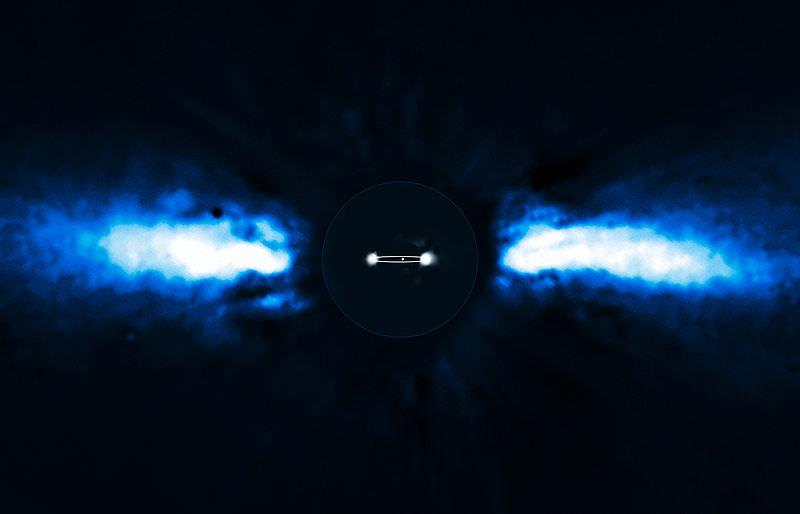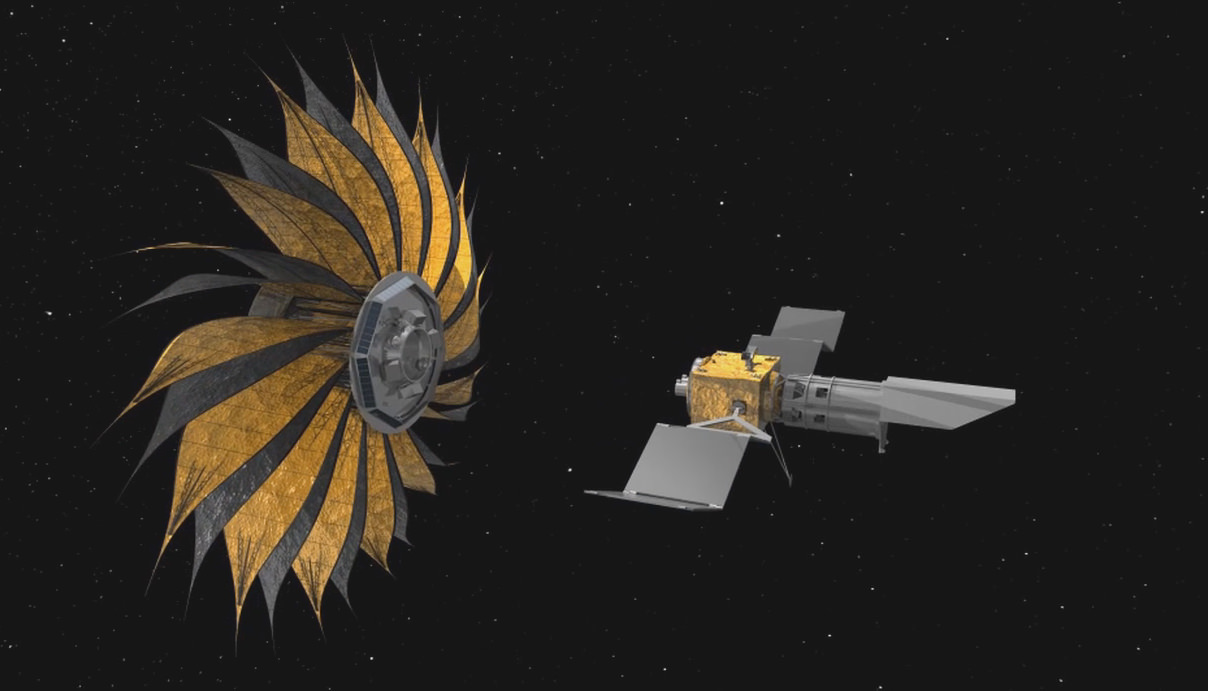To assist with future efforts to locate and study exoplanets, engineers with NASA’s Jet Propulsion Laboratory – in conjunction with the Exoplanet Exploration Program (ExEP) – are working to create Starshade. Once deployed, this revolutionary spacecraft will help next-generation telescopes by blocking out the obscuring light coming from distant stars so exoplanets can be imaged directly.
While this may sound pretty straightforward, the Starshade will also need to engage in some serious formation flying in order to do its job effectively. That was the conclusion of the reached by the Starshade Technology Development team (aka. S5) Milestone 4 report – which is available through the ExEP website. As the report stated, Starshade will need to be perfectly aligned with space telescopes, even at extreme distances.
While over four thousand exoplanets have been discovered to date without the help of a Starshade, the vast majority of them were discovered using indirect means. The most effective means have involved observing distant stars for periodic dips in brightness that indicate the passage of planets (the Transit Method) and measuring a star’s movements back and forth to determine the presence of a planetary system (the Radial Velocity Method).
While effective at detecting exoplanets and obtaining accurate estimates of their size, mass and orbital period, these methods are not very effective when it comes to determining what conditions are like on their surfaces. To do this, scientists need to be able to obtain spectrographic information on these planets atmospheres, which is key to determining if they could actually be habitable.
The only reliable way to do this with smaller, rocky planets (aka. “Earth-like”) is through direct imaging. But since stars can be billions of times brighter than light reflected from a planet’s atmosphere, this is an incredibly difficult process to carry out. Enter the Starshade, which would block out the bright light of stars using a shade that would unfurl from the spacecraft like the petals of a flower.
This will dramatically improve the odds of space telescopes spotting any planets that orbit a star. However, in order for this method to work, the two spacecraft will need to stay aligned to within 1 meter (3 feet), despite the fact that they will be flying up to 40,000 km (24,850 mi) apart. If they are
As JPL engineer Michael Bottom explained in a recent NASA press release:
“The distances we’re talking about for the starshade technology are kind of hard to imagine. If the starshade were scaled down to the size of a drink coaster, the telescope would be the size of a pencil eraser and they’d be separated by about 60 miles [100 kilometers]. Now imagine those two objects are free-floating in space. They’re both experiencing these little tugs and nudges from gravity and other forces, and over that distance we’re trying to keep them both precisely aligned to within about 2 millimeters.”

The S5 Milestone 4 report looked primarily at a separation range of 20,000 to 40,000 km (12,500 to 25,000 mi) and a shade that measured 26 meters (85 feet) in diameter. Within these parameters, a Starshade spacecraft would be able to work with a mission like NASA’s Wide Field Infrared Survey Telescope (WFIRST), a telescope with a primary mirror measuring 2.4 m (~16.5 ft) in diameter that is set to launch by the mid-2020s.
After determining the necessary alignment between the two spacecraft, Bottom and his team also developed an innovative way for telescopes like WFIRST to determine if the Starshade were to drift out of alignment. This consisted of building a computer program that could recognize when light-and-dark patterns were centered on the telescope and when they had drifted off-center.
Bottom found that the technique was very effective at sensing the slightest changes in the position of a Starshade, even at the extreme distances involved. To ensure that it keeps itself aligned, fellow JPL engineer Thibault Flinois and his colleagues developed a set of algorithms that rely on information provided by Bottom’s program to determine when the Starshade’s thrusters should fire to keep it in alignment.
Combined with Bottom’s work, this report showed that keeping the two spacecraft aligned is feasible using automated sensors and thruster controls – even if a larger starshade and telescope were used and positioned at 74,000 km (46,000 mi) apart. While revolutionary as far as autonomous systems are concerned, this proposal builds upon a long tradition for NASA scientists.

As Phil Willems, manager of NASA’s Starshade Technology Development activity, explained:
“This to me is a fine example of how space technology becomes ever more extraordinary by building upon its prior successes. We use formation flying in space every time a capsule docks at the International Space Station. But Michael and Thibault have gone far beyond that, and shown a way to maintain formation over scales larger than Earth itself.”
By confirming that NASA can meet these stringent “formation sensing and control” requirements, Bottom and fellow JPL engineer Thibault Flinois have addressed one of three technology gaps facing the Starshade mission – specifically, how the exact distances involved are related to the size of the shade itself and the telescope’s primary mirror.
As one of NASA’s next-generation space telescopes that will be going up in the coming years, the WFIRST will be the first mission to use another form of light-blocking technology. Known as a stellar coronagraph, this instrument will be integrated into the telescope and allow it to capture images of Neptune to Jupiter-sized exoplanets directly.
While a Starshade project has not yet been approved for flight, one could potentially be sent up to work with the WFIRST by the late 2020s. Meeting the formation-flying requirement is just one step toward demonstrating that the project is feasible. Be sure to check out this cool video that explains how a Starshade mission would work, courtesy of NASA JPL:
Further Reading: NASA


Could such methods be used to observe what is around extremely luminous stars and possibly even supernovae? The “dark” objects would then reflect more light, so more is to see?